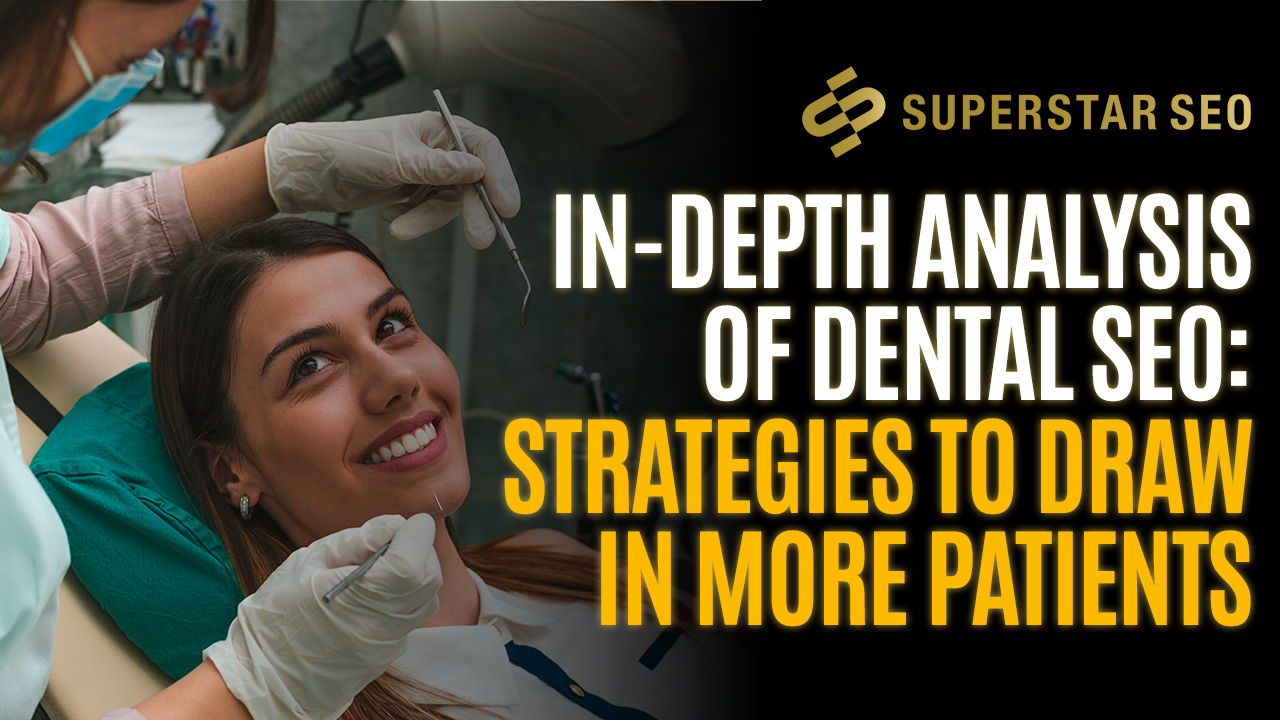In-Depth Analysis of Dental SEO: Strategies to Draw in More Patients
Dental SEO, or Search Engine Optimization tailored specifically for dental practices, is the process of optimizing a dental website to increase its visibility on search engines like Google.
This is crucial because the majority of potential patients turn to online searches when looking for dental services, making it essential for a Dental SEO Company to implement effective strategies.
According to recent statistics, nearly 77% of patients conduct online research before scheduling an appointment. This means that if your dental practice is not easily found online, you may be missing out on a significant number of potential clients.
Investing time and resources into dental SEO is essential for the growth and sustainability of your practice. As competition continues to rise in the dental industry, those who prioritize their online presence will have a distinct advantage. By understanding and implementing the basics of dental SEO, you can ensure that your practice not only survives but thrives in an increasingly digital world.
Mastering Keyword Research for Dental Practices
Identifying the right keywords is a fundamental aspect of any successful SEO strategy, particularly for dental practices looking to attract new patients.
A good starting point is to consider the common questions that individuals ask when searching for dental services. For instance, phrases like “best dentist for kids” or “emergency dental care near me” are examples of long-tail keywords that reflect specific patient needs. These longer, more detailed phrases often have lower competition compared to broader keywords, making them an excellent target for dental practices aiming to capture local search traffic.
Utilizing tools such as Google Keyword Planner or SEMrush can significantly enhance your keyword research efforts. These platforms allow you to analyze search volume, competition, and related terms, providing insights into what potential patients are actively searching for. By examining the content, meta tags, and headings used by successful dental practices in your area, you can identify opportunities to tailor your own content strategy effectively.

The Impact of Long-Tail Keywords in Dental SEO
For instance, instead of targeting a generic keyword like “dentist,” consider phrases like “affordable teeth whitening in [your city]” or “pediatric dentist with evening hours.” By focusing on these specific queries, you not only increase the likelihood of attracting patients who are ready to book an appointment but also enhance the relevance of your content to their needs.
Incorporating these long-tail keywords throughout your website—particularly in blog posts, FAQs, and service descriptions—can improve your search engine rankings and visibility. It’s also essential to regularly revisit and update your keyword strategy based on shifts in search trends and patient behaviors.
Engaging Content Marketing Ideas for Dental Practices
Creating compelling content is essential for dental practices looking to engage their audience and establish a loyal patient base.
One effective way to achieve this is by sharing educational blog posts that offer valuable dental tips and tricks. For instance, a blog post titled “Five Everyday Habits for a Healthier Smile” can resonate with readers by providing practical advice on oral hygiene. This type of content not only informs patients about proper brushing and flossing techniques but also emphasizes the importance of regular dental check-ups, ultimately nurturing a proactive approach to dental health.
Another engaging idea is to explore common dental myths and misconceptions in a blog post titled “Debunking Common Dental Myths.” This topic can encourage readers to rethink their beliefs about oral care, such as the idea that whitening toothpaste is enough to achieve a bright smile or that sugar-free gum eliminates the need for brushing. Including personal anecdotes or patient stories can further enhance the relatability of the content, making it more engaging for the audience.
Creative Ways to Share Dental Care Tips
Incorporating multimedia elements can also elevate content marketing efforts. A blog series featuring video tutorials on topics like “How to Choose the Right Toothbrush” or “The Best Foods for Dental Health” can capture the attention of readers who prefer visual learning.
These videos can demonstrate techniques and offer tips, making it easier for patients to understand and implement good oral care practices. Additionally, sharing infographics that visually represent the steps involved in achieving optimal dental hygiene can be a great way to present information in a digestible format.
The Importance of Technical SEO for Dental Practices
Technical SEO serves as the backbone of a well-optimized website, ensuring that all elements work seamlessly to enhance user experience and improve search engine rankings. One of the most crucial factors in technical SEO is website speed.
A fast-loading website not only keeps users engaged but also plays a significant role in how search engines rank a site. Research has shown that if a webpage takes longer than three seconds to load, the likelihood of a user bouncing back to the search results increases dramatically. For dental practices, this means that investing in optimizing page speed—through techniques such as image compression, minimizing code, and leveraging browser caching—can lead to higher visitor retention and increased appointment bookings.
Mobile-friendliness is another essential consideration in technical SEO. With an increasing number of patients searching for dental services on their smartphones, having a responsive design that adjusts seamlessly to various screen sizes is non-negotiable. A mobile-optimized website not only enhances user experience but also aligns with Google’s mobile-first indexing approach, which prioritizes mobile-friendly sites in search results.

Enhancing Security and Trust with HTTPS
Websites that utilize HTTPS are not only more secure, protecting user data and privacy, but they also benefit from a ranking boost in search engine results.
This is especially critical for dental practices that collect sensitive information from patients during appointment scheduling or consultations. By ensuring that your website is secure, you not only comply with best practices but also build trust with potential patients. A secure site conveys professionalism and instills confidence, encouraging visitors to engage more readily with your services.
Conclusion
Persistence in SEO efforts is essential, much like the commitment required for maintaining good oral hygiene. Just as daily brushing and regular dental check-ups lead to long-term oral health, a consistent and strategic approach to SEO can significantly enhance your online presence and attract more patients over time.
While the results of SEO may not be immediate, the long-term payoff is substantial.
Investing time and resources into optimizing your website, creating valuable content, and engaging with your community will ultimately lead to increased visibility and patient growth. Just as a healthy smile opens doors to opportunities, a well-optimized dental practice can lead to a thriving patient base. Remember, the key to success—both in SEO and oral hygiene—is persistence and dedication!





